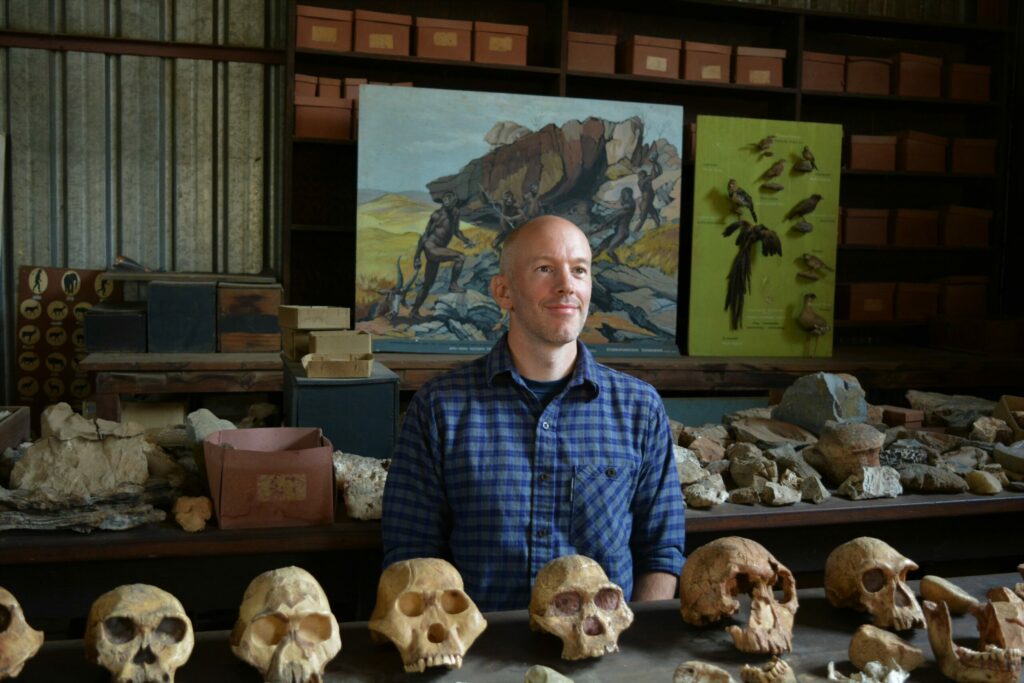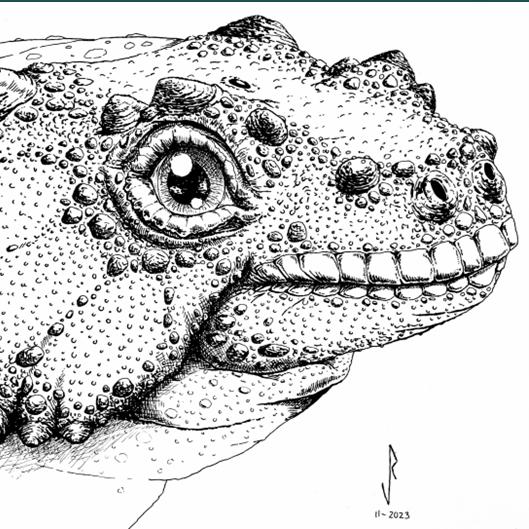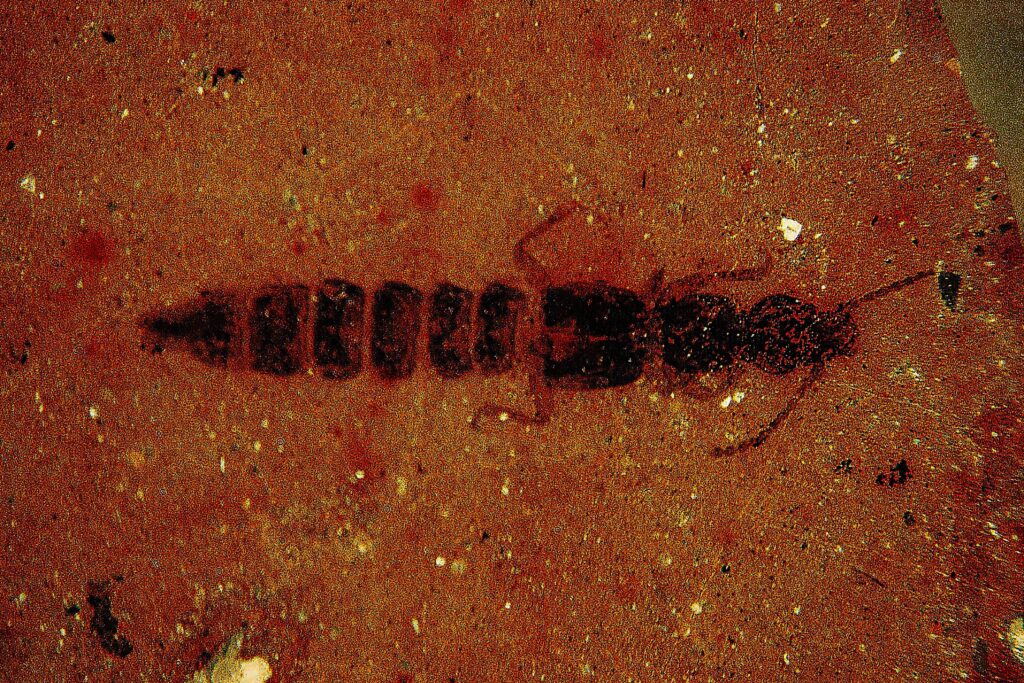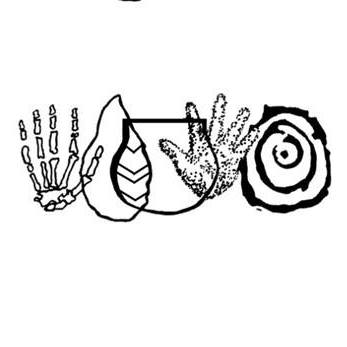Research that appears in PNAS provides new dates for Sterkfontein Cave
New dating research at Sterkfontein Caves will shake up our understanding of earlier human evolution.

Small bites
- Fossils at Sterkfontein Cave are a million years older.
- The new age range is between 3.4-3.6 million years, meaning that the South African Australopithecus are contemporaneous with those in East Africa.
- The cosmogenic nuclide dates place the Cradle of Humankind fossils on the Human family tree.
New dating research will shake up our understanding of earlier human evolution.
A section of the world-famous Sterkfontein Caves is a million years older than initially believed, and it is likely to change our understanding of our earliest human origins.
For nearly 90 years, the Sterkfontein Caves, situated 40 kilometres from Johannesburg, have produced hundreds of australopithecine fossils. This is since the discovery of the first adult Australopithecus by Dr Robert Broom in 1936. Included in those finds have been several iconic specimens, such as the cranium that has become popularly known as Mrs Ples and the near-complete Little Foot skeleton.
But with these 500 odd discoveries has emerged a decades-old mystery. Palaeoscientists have puzzled over the age of some of these fossils. Most australopithecine remains were excavated from a cave infill in Sterkfontein called Member 4. This part of the cave has produced the richest deposit of australopithecine fossils in the world, but age estimates for Member 4 have swung wildly over the years. This is because dating these fossils has proven notoriously tricky. “Sterkfontein has more Australopithecus fossils than anywhere else in the world,” explains Professor Darryl Granger of Purdue University in the United States. “But it’s hard to get a good date on them. People have looked at the animal fossils found near them and compared the ages of cave features like flowstones and gotten a range of different dates.” Some age estimates have Member 4 at 2 million years old, while others have it at 3 million. The problem with the 2 million-year-old estimate means that Australopithecus fossils found in the deposit would be younger than the appearance of the genus Homo. From early Homo would emerge modern humans (Homo sapiens).
New research that appeared in a paper published in the journal PNAS has re-examined the age of Member 4 and the Jacovec Cavern. The researchers used a dating method developed by Granger, who specialises in dating geological deposits. His previous work happened to be also at Sterkfontein, where he dated the Little Foot skeleton to about 3.7 million years old. “The new ages range from 3.4-3.6 million years for Member 4, indicating that the Sterkfontein hominins were contemporaries of other early Australopithecus, like Australopithecus afarensis, in east Africa,” says Professor Dominic Stratford, Director of Research at the caves, and one of the authors on the paper.
The researchers established these dates by studying the radioactive decay of the rare isotopes aluminium-26 and beryllium-10 in the mineral quartz. Granger and his team used an accelerator mass spectrometry to measure these radioactive nuclides. “These radioactive isotopes, known as cosmogenic nuclides, are produced by high-energy cosmic ray reactions near the ground surface, and their radioactive decay dates when the rocks were buried in the cave when they fell in the entrance together with the fossils,” explains Granger who was also a lead author on the paper.
The previous uranium-series dates for Member 4 had been obtained through the calcite flowstone deposits found in the cave fill. However, observations made by the team revealed that the flowstone is younger than the cave infill.
Besides measuring the radioactive nuclides in the rocks, the researchers also mapped the cave deposits and showed how animal fossils, used to obtain dates, became mixed together during excavations in the 1930s and 1940s. This added to the confusion over the age of Member 4. “This re-assessment of the age of Sterkfontein Member 4 Australopithecus fossils has important implications for the role of South Africa on the hominin evolution stage. Younger hominins, including Paranthropus and our genus Homo, appeared between 2.8 and 2 million years ago. Based on previously suggested dates, the South African Australopithecus were too young to be their ancestors, so it has been considered more likely that Homo and Paranthropus evolved in East Africa,” says Stratford.
These younger South African australopithecines were once thought to have continued to evolve on their own, eventually dying out and playing no part in the Homo and subsequent human evolution. “This important new dating work pushes the age of some of the most interesting fossils in human evolution research, and one of South Africa’s most iconic fossils, Mrs Ples, back a million years to a time when, in east Africa, we find other iconic early hominins like Lucy,” says Stratford.
This now places the Cradle of Humankind fossils on the Human family tree and plays its part in our early evolution.
“The redating of the australopithecine bearing infills at the Sterkfontein Caves will undoubtedly re-ignite the debate over the diverse characteristics of Australopithecus at Sterkfontein and whether there could have been South African ancestors to later hominins,” says Granger.





